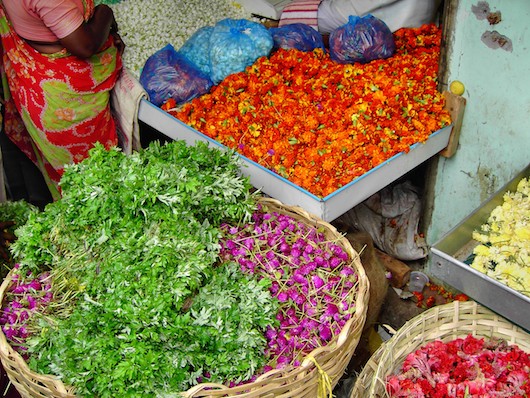
Indian Cuisine and Etiquette
Indian cuisine is a legendary potpourri of delectable spices and ingredients that have now influenced most of the world.
Much of Indian cuisine is vegetarian resulting from millennia of Hindu influence. What the traveler should be aware of is that there are 28 Indian states plus 7 union territories, each with its own distinctive regional influence and cuisine. So in effect there is no single one-size-fits-all when it comes to the astounding and delicious smorgasbord of cuisine across India – certainly not all states have ‘hot’ and spicy dishes.
It awaits the adventurous tourist to discover these delights that have few equals in the world. A brief list of spices found in some Indian states cuisine are: garam masala- a varied blending of certain spices: peppercorns, mace, black cumin, cloves, malabar leaves, cinnamon, cumin seeds, green, brown and black cardamom, star anise, nutmeg and coriander seeds.
The use of the curry leaves and root is typical of south India, a vast area. Tumeric, fenugreek, ginger, garlic and the worlds most expensive spice saffron, are also robustly established throughout India’s various regions of cuisine.
Beans/lentils/peas are used throughout Indian cuisine as is rice in abundance. Vegetable oil, peanut oil and mustard oil are commonly used depending on the state and region.
Indian etiquette requires that mostly the right hand is used in eating almost all foods. This is what we in the west warmly term ‘finger food’, so the traveler should be prepared to indulge this way of eating upon arrival.
Usually the left hand is used in tearing off a piece of ‘roti’ – flat bread – and scooping up the curry allowing the fingers relatively clean use there-of. Along the coast to the south there is the preference of raising/using an entire handful of rice in the eating while most urban Indians use the thumb and fingers.
Traditionally meals were eaten seated at low stools or on the floor on cushions.
Although the middle class in India have now favored the use of forks and spoons, the traveler should not expect this as a norm at restaurants – a blessing though it may seem to you. Explore, be adventurous and embrace the way the locals eat and you will surely come away with a richer, deeper experience of your trip there.
